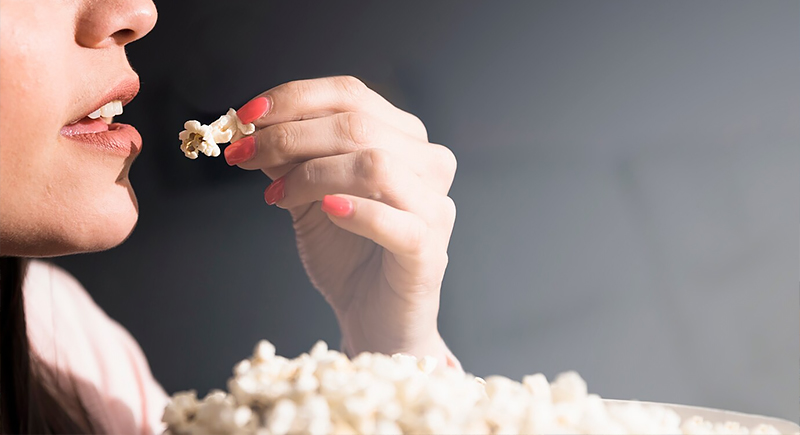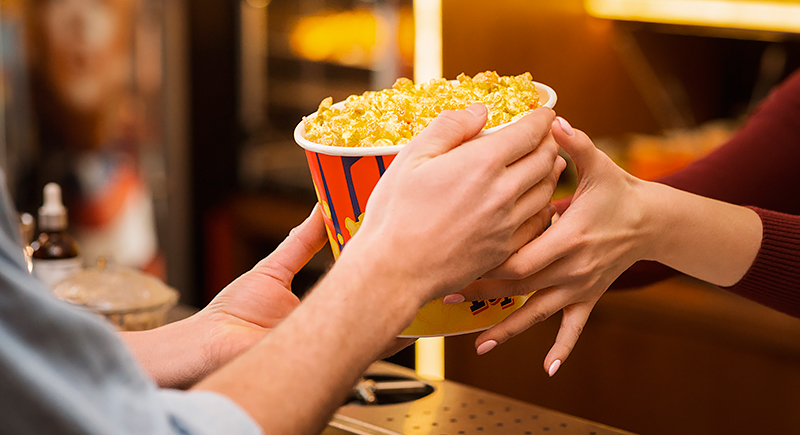Popcorn's storied history is as rich and varied as the kernels themselves. From its ancient origins in Central America to its modern-day association with movie theaters, this beloved snack has evolved significantly over time. Popcorn’s journey displays fascinating cultural twists, economic impacts, and technological advancements, making it a staple in both historical and contemporary snacking traditions.
Popcorn Was First Discovered Over 8000 Years Ago

Credit: iStockphoto
Popcorn’s journey to movie theater fame began over 8,000 years ago. It was discovered as a wild grass called “teosinte,” which is a form of maize. This crunchy treat was initially a staple snack for native communities. Its eventual leap to Hollywood illustrates how ancient culinary practices shaped modern cinematic snacking traditions.
The Origin of the Name "Popcorn"

Credit: iStockphoto
Popcorn got its name from the popping sound it made while transitioning into puffy corn. When it was introduced in North America, early Americans dubbed it "popped corn," which was later shortened to "popcorn." Its catchy name quickly became a household name, setting it up for its adventure in the movie theaters.
Origin in Central America

Credit: iStockphoto
Popcorn originated in Central America, where indigenous people first discovered its unique properties. They enjoyed it as a snack, which set the stage for its global fame today. Understanding its origins is critical to comprehending the deep cultural roots of this crunchy treat.
North Americans Brought Popcorn to New England

Credit: iStockphoto
The North Americans brought popcorn to New England from Chile. It would start its journey into movie theaters at this point. They learned about this versatile treat from indigenous people. Its easy preparation and delightful crunch made it a staple at social gatherings and events.
Its Popularity Ignited by Its Mobility

Credit: flickr
The portability of popcorn saw it quickly gain popularity among entertainment enthusiasts. Easy to transport and quick to prepare, it immediately took a top spot at fairs and carnivals. This mobility allowed popcorn to spread quickly, paving the way for its eventual association with movie theaters.
Early Resistance from Movie Theaters

Credit: freepik
Movie theaters initially resisted selling popcorn, fearing the sound of munching would be distracting for audiences. There were also concerns about it damaging the luxurious carpets. However, popcorn’s irresistible appeal and profitability soon overcame this resistance. Theaters eventually embraced popcorn, enhancing the movie-going experience for audiences everywhere.
The Advent of Sound Films Expanded the Audience

Credit: freepik
The rising popularity of sound films revolutionized the movie industry. In addition to attracting larger and more diverse audiences, they also eliminated concerns about the munching sound. Popcorn sales soared as more people flocked to theaters. This era marked the beginning of the inseparable bond between popcorn and cinema.
Popcorn’s Popularity Soared During the Great Depression

Credit: freepik
During the Great Depression, popcorn's affordability made it a popular snack. While most popular snacks went out of reach for many, popcorn remained cheap. Costing only 5 to 10 cents, it provided an accessible treat. This economic context cemented popcorn’s position as the go-to snack at cinemas, offering comfort during tough times.
World War II Boosted Popcorn Sales

Credit: flickr
World War II was a blessing in disguise for popcorn and its lovers. The rationing of limited sugar boosted its sales as an alternative snack. Popcorn became a patriotic choice, with Americans consuming three times more than before. This surge reinforced its place in American culture and cinema.
Popcorn Machines Became a Common Sight

Credit: flickr
By the 1930s, popcorn machines were a common sight in theater lobbies. Charles Cretors' invention of the popcorn machine revolutionized the industry, making popcorn-making efficient and accessible. This innovation cemented popcorn’s role as a beloved movie snack. This was the origin of popcorn vending stalls in cinemas.
Marketing and Nostalgia Linked Popcorn with Movies

Credit: iStockphoto
Popcorn marketing campaigns in the 1940s and 1950s linked it to the movie-going experience. It instantly became synonymous with movie-watching adventures. Nostalgic advertisements highlighted its timeless appeal. This clever marketing strategy ingrained popcorn as an essential part of cinema culture. Almost every movie started with a popcorn ad.
Popcorn Sales Dipped with the Rise of Television

Credit: freepik
The rise of television in the 1950s caused a dip in popcorn sales. People preferred watching TV in the comfort of their homes. This drastically reduced theater attendance and, subsequently, popcorn sales. However, the snack eventually found its way into living rooms, adapting to the changing entertainment landscape.
Popcorn Lacked Popularity in Homes

Credit: freepik
Initially, popcorn wasn’t popular in homes due to cooking challenges. The available machines were largely commercial, compelling popcorn lovers to purchase it from stores and bring it home. The invention of microwave popcorn in the 1980s changed this, making it a convenient home snack. This expanded popcorn’s presence beyond theaters.
Rise of Flavored Popcorn

Credit: iStockphoto
The 1970s and 1980s saw a rise in flavored popcorn offerings. Varieties like cheese, caramel, and butter broadened its appeal. These new flavors revitalized interest in popcorn. It regained its almost-lost glory when TV shook its strong foundation. It remains a versatile snack enjoyed in theaters and at home today.
Popcorn's Nutritional Benefits

Credit: freepik
Popcorn is whole grain, which means it's not just a snack but also a nutritionally ideal food. It’s low in calories and high in fiber, making it a healthier snack option. It's also beneficial to the metabolic process. These benefits contributed to its enduring popularity, appealing to health-conscious consumers.





